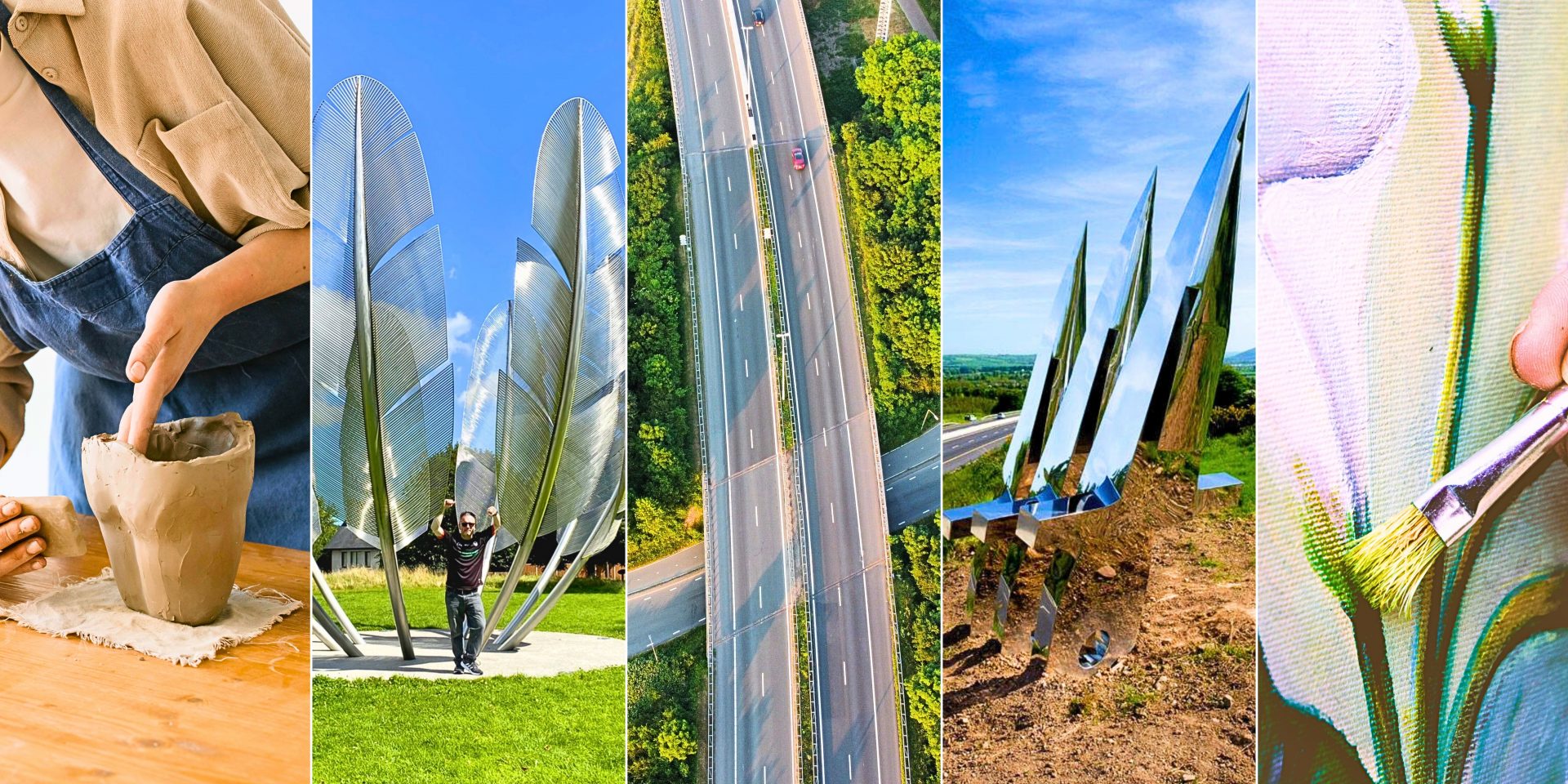



Many of these artworks come from the ‘Percentage for Art’ scheme, which was introduced in 1993 by President Michael D. Higgins. As a result, 1% of the cost of every new road in Ireland goes toward funding public art. These sculptures often tell a story. Some highlight local history, while others share myths, legends, or even promote tourism in the area.
‘Architects of the Land’ by Colin Grehan, located on the Nenagh Bypass in Tipperary. This stunning sculpture features two massive limestone pieces. On one side, there’s a bull, and on the other, a man pulling backwards. This artwork is inspired by North Tipperary’s farming history. It explores the shift from hunter-gatherer life to domesticating animals and cultivating the land.
The ‘Beehive Huts’ are found on the Balbriggan bypass and Doon on the Portlaoise bypass. These quirky huts are a collaboration between Robert McColgan and Irene Brenner. They are inspired by Ireland’s ancient monastic settlements. Imagine little animals or even magical creatures living right next to the busy road – it adds a bit of fun to the journey!
The ‘Tower of Imagination’ near Newry on the Dublin/Belfast A1, was created by Maurice Harron. The crooked tower has tiny windows with colourful monsters and animals peeking out. Two children stand beside the tower, staring at passing cars. The piece sparks a sense of childlike wonder and adds a playful touch to the landscape.
‘Perpetual Motion’ aka the Naas Ball, is situated on the N7 outside Naas, Co. Kildare. It was designed by Remco De Fouw and Rachael Joynt in 1993. The giant, 9 metre diameter ball is covered in road markings. It has become a local symbol for Naas and the locals even use it as their social media handle @naasball. So, it’s more than just art – it’s a beloved piece of local culture!
‘The Violin’ is designed by Alex Pentek and is found along a roadside bank in Longford. The sculpture is made from corten steel and looks to be emerging from the earth. It is a reference to Longford’s musical heritage. In rural Ireland, a violin (or fiddle) was often used for road-side Céilís before the new age of motorways. This sculpture is all about celebrating that tradition.